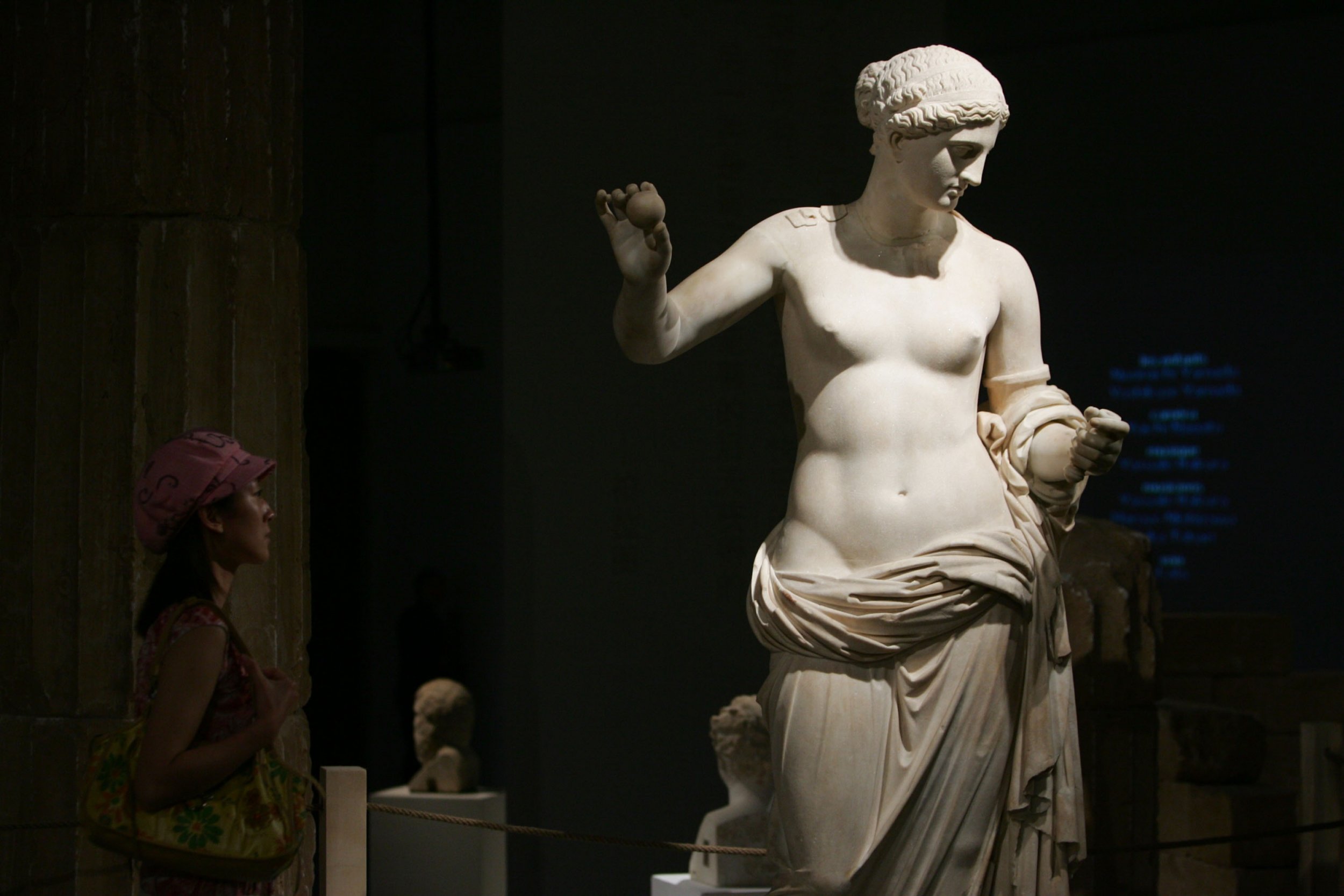
The Aphrodite Statue stands as a timeless symbol of beauty, love, and grace. But what makes this ancient sculpture so captivating? Crafted during the Hellenistic period, this masterpiece has intrigued historians, artists, and tourists alike. Why is it so revered? Its intricate details, from the delicate folds of her drapery to the serene expression on her face, showcase the exceptional skill of ancient sculptors. Did you know that the statue has inspired countless replicas and artworks throughout history? Join us as we uncover 24 fascinating facts about this iconic statue, revealing its historical significance, artistic brilliance, and enduring legacy.
The Origins of the Aphrodite Statue
The Aphrodite Statue is one of the most iconic representations of ancient Greek art. Its history and significance are rich with fascinating details.
- The statue represents Aphrodite, the Greek goddess of love, beauty, and desire.
- It was originally created during the late Classical period of Greek art, around the 4th century BCE.
- The most famous version of the statue is the Aphrodite of Knidos, sculpted by Praxiteles.
- Praxiteles' work was revolutionary for its time, as it was one of the first major sculptures to depict a nude female figure.
Artistic Significance
The artistic techniques and styles used in the creation of the Aphrodite Statue have influenced countless works of art throughout history.
- The statue is celebrated for its naturalistic portrayal of the human body.
- Praxiteles used a technique called "contrapposto," where the figure stands with most of its weight on one foot, creating a sense of movement.
- The Aphrodite of Knidos was so admired that it became a major tourist attraction in ancient Greece.
- Many Roman copies of the statue were made, indicating its widespread influence and popularity.
Cultural Impact
Beyond its artistic value, the Aphrodite Statue holds a significant place in cultural and religious contexts.
- The statue was originally placed in a temple dedicated to Aphrodite on the island of Knidos.
- It was considered a symbol of divine beauty and was worshipped by many.
- The statue's nudity was both shocking and revolutionary, challenging contemporary norms about modesty and the female form.
- It inspired numerous literary references in ancient texts, highlighting its cultural importance.
Modern Discoveries and Interpretations
The Aphrodite Statue continues to captivate scholars and art enthusiasts alike, with new discoveries and interpretations emerging over time.
- In 1969, a significant fragment of the statue was discovered, providing more insight into its original appearance.
- Modern technology, such as 3D scanning, has allowed researchers to create detailed reconstructions of the statue.
- Some scholars believe that the statue's pose and expression reflect a deeper narrative or mythological story.
- The statue has been the subject of various art historical debates, particularly regarding its original color and finish.
Influence on Later Art
The legacy of the Aphrodite Statue extends far beyond ancient Greece, influencing art and culture for centuries.
- Renaissance artists, such as Botticelli and Michelangelo, drew inspiration from the statue's form and beauty.
- The statue's influence can be seen in the works of neoclassical artists like Antonio Canova.
- It has also inspired modern artists, including Salvador Dalí, who created surrealist interpretations of the statue.
- The Aphrodite Statue has been featured in numerous films, books, and other media, cementing its place in popular culture.
Preservation and Display
Efforts to preserve and display the Aphrodite Statue have ensured that it remains accessible to the public.
- The original statue is housed in the British Museum, where it attracts millions of visitors each year.
- Several museums around the world, including the Louvre and the Vatican Museums, have Roman copies of the statue.
- Conservation efforts have focused on protecting the statue from environmental damage and deterioration.
- Educational programs and exhibitions continue to highlight the statue's historical and artistic significance.
The Timeless Allure of Aphrodite
The Aphrodite Statue remains a captivating symbol of beauty, love, and art. Its intricate details and historical significance continue to inspire admiration. From its origins in ancient Greece to its influence on modern culture, this statue has left an indelible mark. Whether you're an art enthusiast or a history buff, the Aphrodite Statue offers a glimpse into the past's artistic brilliance. Its enduring appeal lies in its ability to transcend time, connecting us with the ancient world while still resonating today. So next time you encounter this masterpiece, take a moment to appreciate its timeless charm and the stories it holds. The Aphrodite Statue isn't just a piece of art; it's a testament to human creativity and the enduring power of beauty.
Was this page helpful?
Our commitment to delivering trustworthy and engaging content is at the heart of what we do. Each fact on our site is contributed by real users like you, bringing a wealth of diverse insights and information. To ensure the highest standards of accuracy and reliability, our dedicated editors meticulously review each submission. This process guarantees that the facts we share are not only fascinating but also credible. Trust in our commitment to quality and authenticity as you explore and learn with us.


